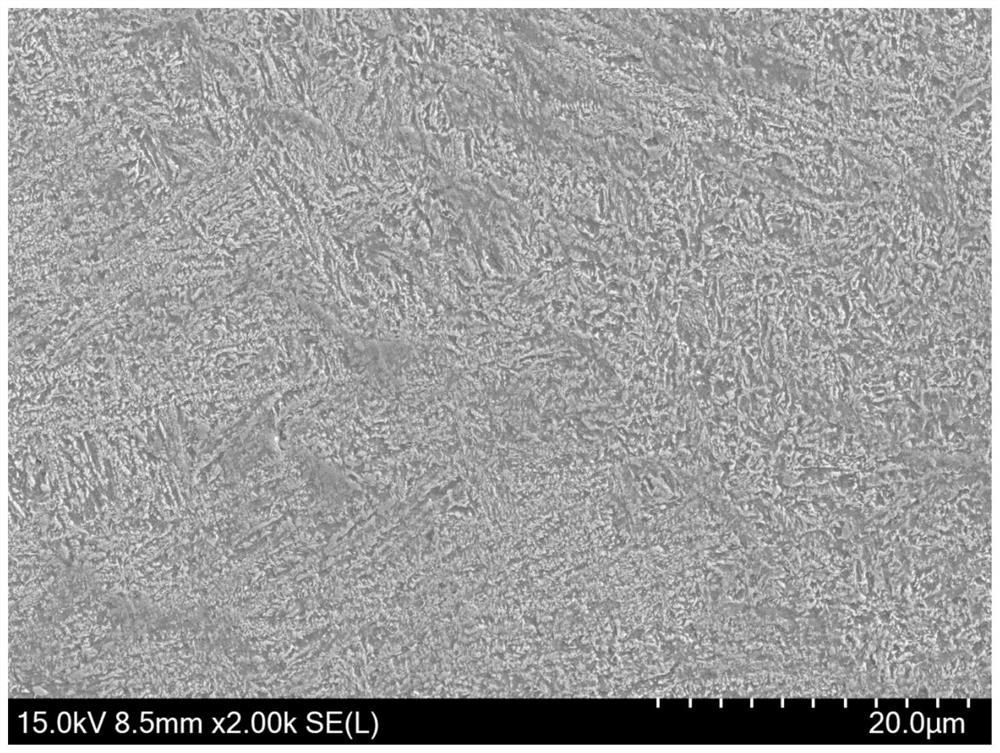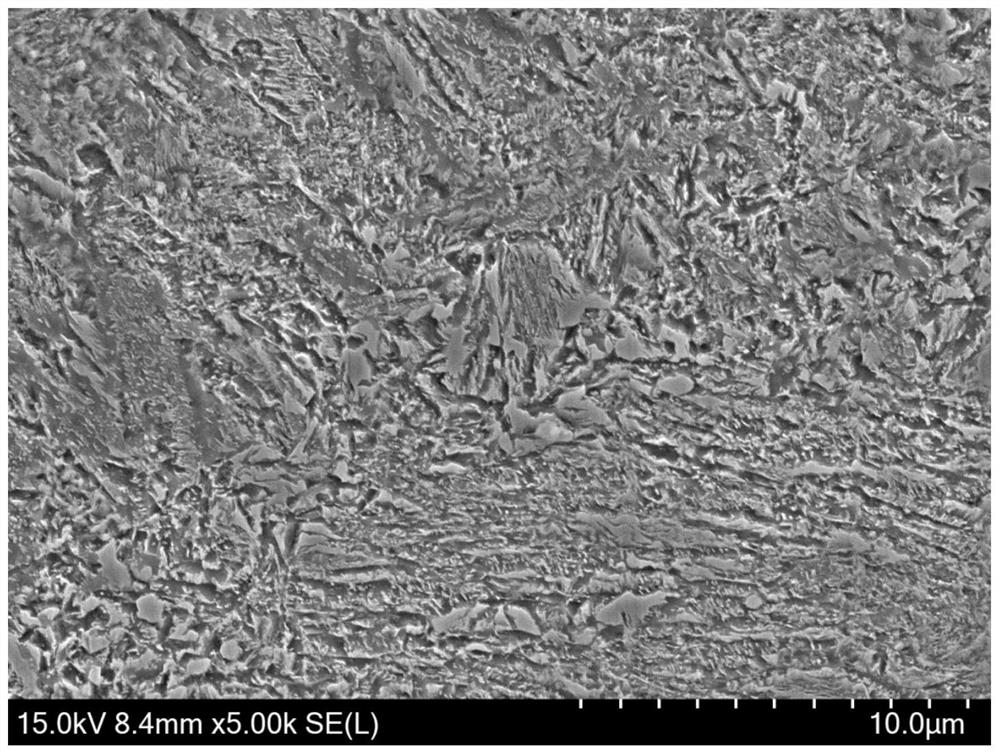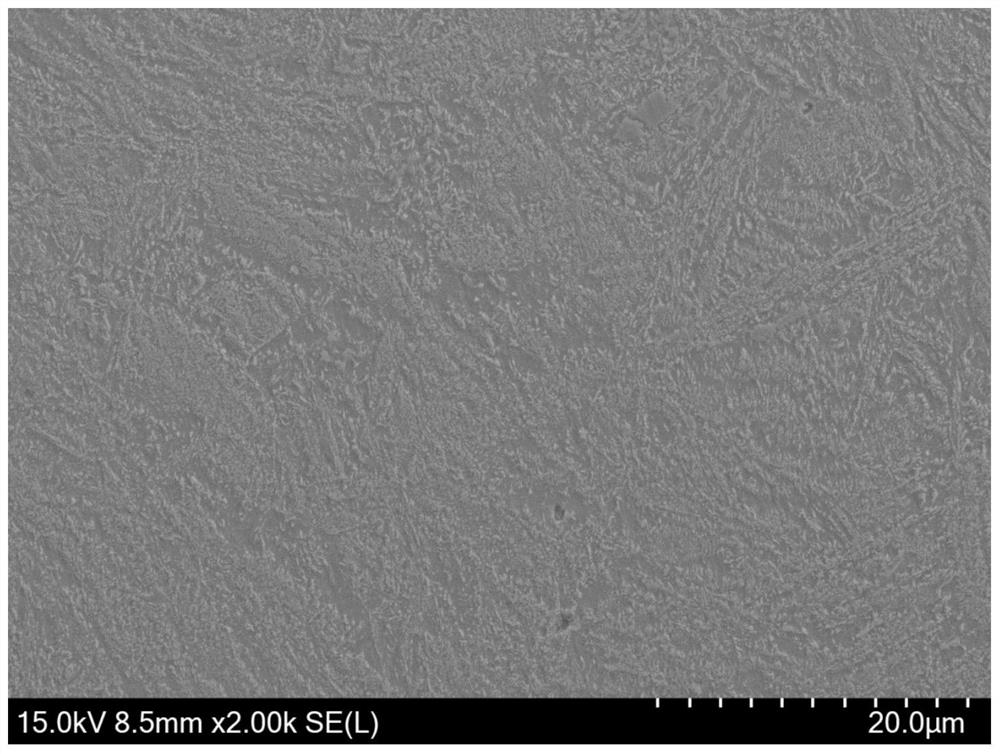A new type of alloy wire for rail repair and a method for repairing rail surface damage
An alloy wire and rail technology, applied in the field of additive manufacturing, can solve the problems of insufficient impact toughness of the welding repair layer, difficult to guarantee the repair quality, and low work efficiency, and achieve the effects of high work efficiency, improved corrosion resistance, and resource saving.
- Summary
- Abstract
- Description
- Claims
- Application Information
AI Technical Summary
Problems solved by technology
Method used
Image
Examples
Embodiment 1
[0028] The new alloy wire for rail repair includes the following components by weight percentage: 0.6% silicon, 0.1% manganese, 0.01% vanadium, 0.01% copper and 0.2% carbon, and the rest is iron.
[0029] The above-mentioned novel alloy wire for rail repair is produced through the following methods: batching, melting and casting.
[0030] details as follows:
[0031] (1) Batching: Use metal manganese, metal copper, metal vanadium, metal iron, carbon block, and raw silicon as raw materials to make ingredients according to the target components.
[0032] (2) Melting:
[0033] (2.1) Add the prepared metal manganese, metal copper, metal vanadium, and metal iron into the intermediate frequency induction furnace, heat it with electricity to melt it, and then add the prepared carbon block and raw silicon in order to obtain an alloy melt.
[0034] (2.2) Deoxidize the molten alloy obtained in step 2.1, and the deoxidation time is 1-2 minutes.
[0035] (2.3) Control the carbon conten...
Embodiment 2
[0040] The new alloy wire for repairing rails includes the following components by weight percentage: 1.5% silicon, 0.6% manganese, 0.1% vanadium, 0.5% copper and 0.1% carbon, and the rest is iron.
[0041] The preparation method of the above-mentioned novel alloy wire for rail repair is according to the preparation method of the novel alloy wire for rail repair in Example 1.
[0042]The method for repairing rail surface damage by utilizing the above-mentioned novel alloy wire for rail repair comprises the following steps: (1) forging the steel casting of the above-mentioned novel alloy wire for rail repair into a wire rod, and cold drawing by a wire drawing process Cladding wire with a diameter of 1.0mm is formed. The wire drawing process includes multiple drawing passes. The method of stress relief before each drawing pass is to hold at 670°C for 8 hours and then air cool. (2) Clean the damaged surface, remove floating rust, dust, oil and other impurities, ensure the cleanli...
Embodiment 3
[0045] The new alloy wire for rail repair comprises the following components by weight percentage: 1.2% silicon, 0.4% manganese, 0.5% copper and 0.4% carbon, and the rest is iron.
[0046] The preparation method of the above-mentioned novel alloy wire for rail repair is according to the preparation method of the novel alloy wire for rail repair in Example 1.
[0047] The method for repairing rail surface damage by utilizing the above-mentioned novel alloy wire for rail repair comprises the following steps: (1) forging the steel casting of the above-mentioned novel alloy wire for rail repair into a wire rod, and cold drawing by a wire drawing process Cladding wire with a diameter of 1.0mm is formed. The wire drawing process includes multiple drawing passes. The method of stress relief before each drawing pass is to hold at 670°C for 8 hours and then air cool. (2) Clean the damaged surface, remove floating rust, dust, oil and other impurities, ensure the cleanliness of the repai...
PUM
| Property | Measurement | Unit |
|---|---|---|
| diameter | aaaaa | aaaaa |
Abstract
Description
Claims
Application Information
 Login to View More
Login to View More - R&D
- Intellectual Property
- Life Sciences
- Materials
- Tech Scout
- Unparalleled Data Quality
- Higher Quality Content
- 60% Fewer Hallucinations
Browse by: Latest US Patents, China's latest patents, Technical Efficacy Thesaurus, Application Domain, Technology Topic, Popular Technical Reports.
© 2025 PatSnap. All rights reserved.Legal|Privacy policy|Modern Slavery Act Transparency Statement|Sitemap|About US| Contact US: help@patsnap.com



